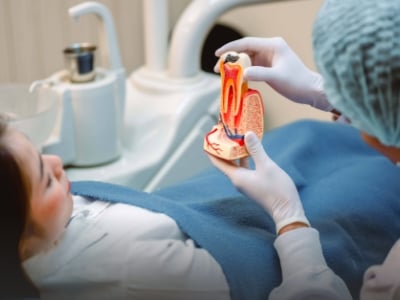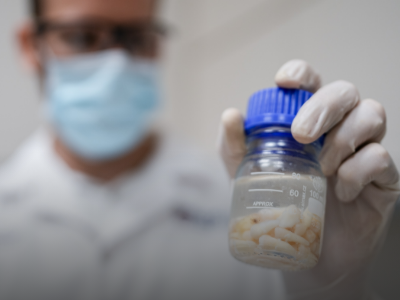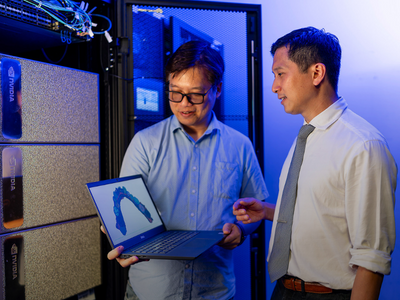Meet the team that keeps your dental tools clean
PUBLISHED ON
SCROLL DOWN
Behind every spotless dental tool at the National University Centre for Oral Health, Singapore’s Central Sterile Supplies Department (NUCOHS CSSD) is a meticulous multi-step process.
Using state-of-the-art sterilisation technology, health attendants follow strict protocols to ensure each instrument is thoroughly cleaned, sterilised and ready for safe use.
The CSSD floor is divided into three main zones: the "dirty" area, where used dental tools are sorted and washed; the "clean" area, for assembly and packing; and the sterilised storage area, where sterilised tools are safely kept for future use.
Each day begins with Miss Lim Ai Chin overseeing her team as they run steam checks on the autoclaves, so that everything runs smoothly.
Part of Miss Lim’s role as Clinic Assistant Manager for CSSD at NUCOHS is ensuring this routine runs like clockwork. Autoclave checks are a critical part of the day’s operations, because maintaining the correct steam temperature is key to effective sterilisation.
The process kicks off with the collection, sorting and pre-treatment of used dental tools.
Pre-treatment for complex tools uses ultrasonic cleaners to remove debris from hard-to-reach areas, while simpler tools bypass this step.
After pre-treatment, the cassette and add-on device are placed in the washer-disinfector for thorough cleaning, which includes pre-wash, multiple washes with cleaning agents, rinsing, and a final thermal rinse. This process ensures the tools are left spotless.
In the clean room, during assembly and packing, dental tools are arranged in the cassettes following a strict sequence, explained Miss Lim. For example, the mouth mirror and explorer are always placed first, as these are the tools dentists reach for at the start of every examination.
After assembly and sorting, the CSSD health attendants wrap the tools carefully in a porous material. Larger tools get the same treatment and are individually packed, so they are sterilised just as thoroughly as the smaller instruments.
Next, the cassettes are loaded into autoclaves – large machines about the size of a built-in oven. Using a combination of vacuum and steam at 134°C, the autoclaves process a significant volume of tools at once.
To help the team monitor the efficacy of the steriliser, each sterilisation load is tested with a biological indicator vial containing traces of micro-organisms.
If a positive result shows up, the batch undergoes three additional rounds of testing to guarantee the tools are safe. The entire process – from washing and packing to sterilisation and storage – takes about four hours.
New health attendants spend six months mastering these sterilisation procedures.
Miss Lim, who started her journey at NUH 38 years ago as a dental assistant, takes great pride in her work.
"As a dental assistant, I knew the importance of clean and safe dental equipment, but I had no clue about how meticulous the sterilisation process is."
– Miss Lim Ai Chin
What was intended as a temporary stint turned into a fulfilling career path for Miss Lim, who describes joining CSSD as a privilege that allowed her to learn what goes on behind the scenes.
Now at 62, with retirement on the horizon, Miss Lim looks back with pride. “These behind-the-scenes processes are really important,” she said. “Knowing that we play a key role in patient care makes our work meaningful.”
In consultation with Lim Ai Chin, Clinic Assistant Manager, Central Sterile Services Department, NUCOHS.




